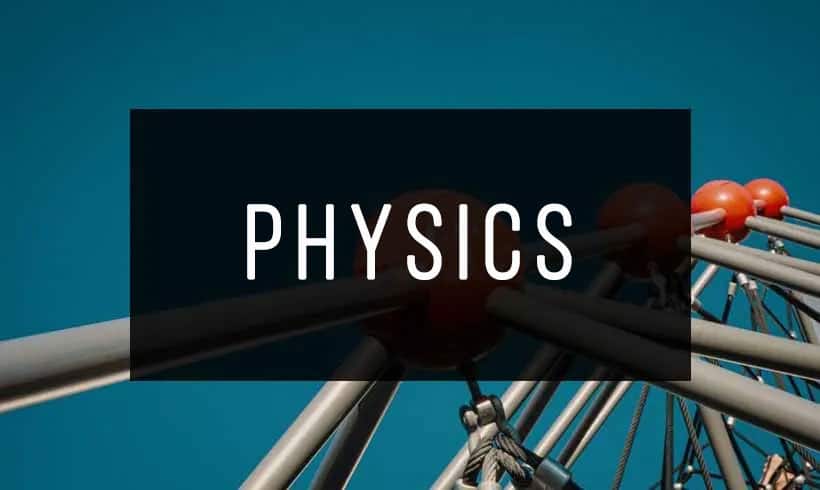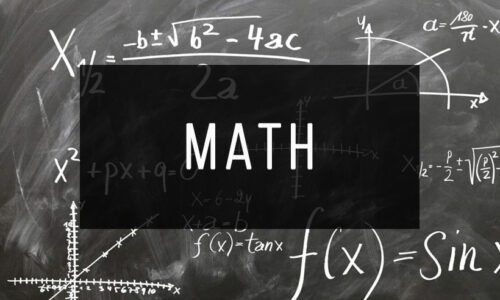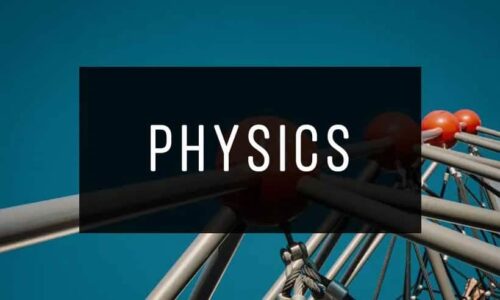Welcome physics lovers! Are you looking for physics books to download for free? You’ve come to the perfect place!
Our platform is dedicated to offering a wide selection of high-quality physics books to meet your academic needs or simply satisfy your intellectual curiosity.
In our extensive library, you’ll find all types of physics books, from classics to the latest research breakthroughs. We cover topics such as quantum mechanics, thermodynamics, electromagnetism, and much more.
Best of all, all the physics books on our website are available to download completely free of charge. Our goal is to promote access to education and knowledge, and we believe that sharing these resources is crucial to achieving this.
Don’t wait any longer to dive into the fascinating world of physics. Explore our catalog, find the book that interests you the most, and start reading today!
1) Acoustic Physics Books
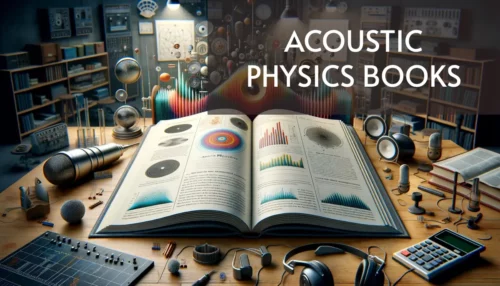
Acoustics is the branch of physics that studies all the physical phenomena that are related to the generation, propagation and detection of mechanical waves that are heard in a band of frequencies, which are called acoustic waves.
Physicists who study acoustics also have a lot of work to do to develop musical concert halls, rooms that require a certain material and a geometry of the exact proportions to allow the audible range to be perfect in all parts of the enclosure.
If you want to delve into the world of acoustic physics you can not miss the selection of books that we leave you below.
2) Aerodynamic Books
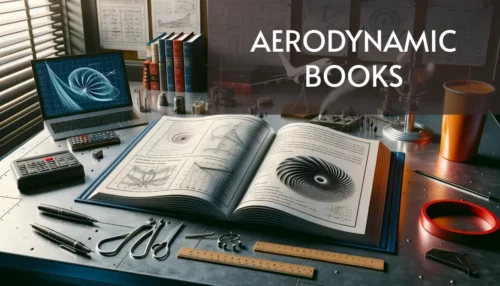
Aerodynamics is the area of fluid mechanics dedicated to analyzing the motion of gases – especially air – and the interactions they have with the bodies that move in them.
In short, aerodynamics is the amount of drag a body suffers as it moves. The more aerodynamic this body is, the easier it will be to reach higher speeds with a much more efficient use of the fuel it uses.
Aerodynamics provides information about phenomena such as velocity, air density, temperature, pressure, gravity, etc.
3) Astrophysics Books
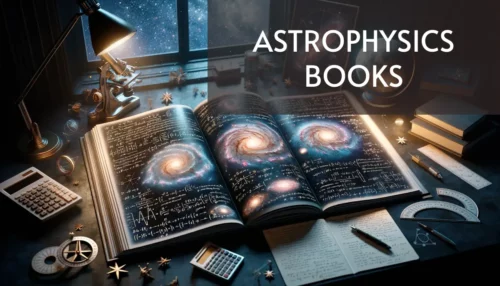
With the aim of expanding your knowledge about astronomical objects, we present you with a wide selection of free books on astrophysics in PDF format.
Astrophysics assumes that the laws of chemistry and physics are universal; in other words, they are the same and apply throughout the universe; astrophysics can be seen as the application of physics to the phenomena observed by astronomy.
So that you have the opportunity to get to know and learn about this topic of great interest, we offer you a selection of texts that cover essential and profound concepts about astrophysics.
4) Books about The Universe

The Universe is the space and time that encompasses everything that exists, that is, all types of matter, planets, energy, light, stars, satellites, galaxies, and other celestial objects, including the laws and physical constants that govern them. It is also called the Cosmos. The sciences that study it are several, especially two: astronomy and cosmology.
The universe has a variable and difficult-to-calculate extent because it can in turn contain other universes. Many times, we tend to think that the universe is static, but the reality is that it is a changing place filled with phenomena.
There are two absolutely opposed firm theories regarding the true origin of the Universe; these are the creationist theory (whose bases are found in the biblical explanation of the beginning, where everything is the work of God) and the evolutionary theory (which seeks explanations based on reliable studies and does not assume anything without having rigorously tested it).
5) Cosmology Books

Cosmology is the science that studies the composition, evolution, and properties of the universe in order to understand its origin and development. It is based on two fundamental principles that guide its work: the theory of relativity formulated by the scientist Einstein and the inflationary theory.
It can be said that cosmology deals with analyzing the universe in general. Beyond astronomy, this branch of knowledge is linked with physics, philosophy, and religion, for example.
Cosmology is divided into two types: physical cosmology, which deals with studying the large-scale structure and dynamics of the universe; alternative cosmology, which encompasses all theories, models, or ideas that contradict the standard model proposed by physical cosmology.
6) Dynamics Physics Books
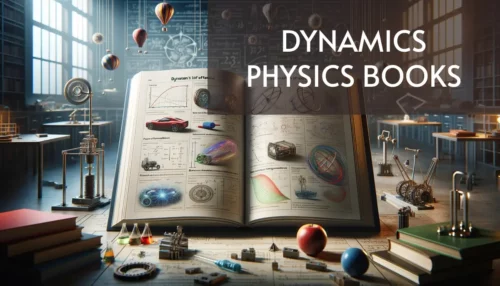
Dynamics is the part of physics that studies the relationship between the forces acting on a body and the effects that will occur on the movement of that body.
Ancient Greek thinkers believed that the speed and constancy of motion in a straight line of a body (later described as uniform rectilinear motion or URM) were proportionally related to a constant force. By extension, it was believed that the fall of a body belonged to this category, so it was assumed that the heavier the body, the faster it would fall.
Later, Galileo Galilei understood that the fall of bodies could not be a uniform motion, and that from the same height, two bodies of different weights take the same time to fall. This context enabled Isaac Newton to establish the three fundamental laws of dynamics some years later, which explained the fundamental patterns of body behavior.
7) Electrical Circuits Books
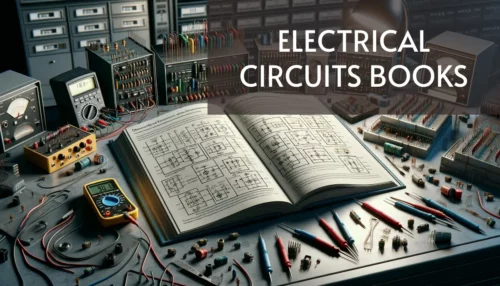
An electrical circuit is the set of electrical elements connected to each other that allow the generation, transport and use of electrical energy in order to transform it into another type of energy.
In general, we can find the following five types of elements:
Generator, responsible for powering the electrical loads.
Receiver, which transforms the electrical energy into another type of energy, such as heat, light, etc.
Conductors, which constitute the paths for the electrons. They are usually cables, but there are other options
Control elements, which block or direct the flow of current.
Protection elements, to prevent damage to installations, equipment and people.
The graphical representation of the electrical circuit is known as a circuit diagram or electronic schematic. This representation shows the components of the circuit with uniform pictograms according to certain standards.
8) Electricity Books
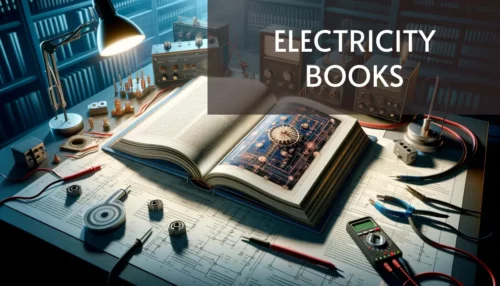
Electricity is both a vitally important science and craft in today’s world. Our life revolves around the devices and machines that we can use thanks to electrical energy, as well as the services and lighting it provides.
Electric energy today can be obtained from various renewable and non-renewable primary sources, however, attempts are being made to innovate with renewable sources to supply ourselves with cleaner energies, such as solar energy, for example.
In physics, electricity is that branch that studies electrical phenomena. But, in its general definition, it is about the phenomena that result from electric charges, their interaction and movements. In other words, it is the force that occurs as a consequence of the attraction and repulsion of positive and negative charges.
9) Electromagnetism Books
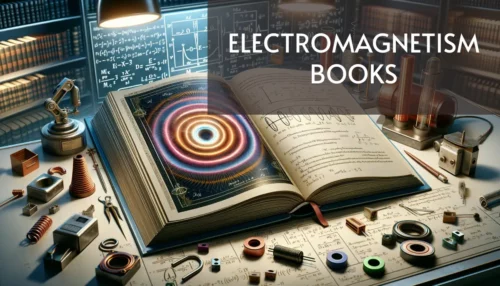
The notion of electromagnetism is used to denote the interaction between magnetic fields and electric fields. The concept is also used to denote the specialization of physics focused on the study of these issues.
Electromagnetism is concerned with the description of phenomena that develop from the intervention of electric charges, both moving and at rest, which give rise to magnetic and electric fields and produce effects in gases, liquids and solids. Electrodynamics and electromagnetic induction are included in this branch because they are based on the laws of electromagnetism.
Electromagnetic phenomena have very important applications in disciplines such as engineering, electronics, health, aeronautics or civil construction, among others. They are present in everyday life, almost without us realizing it, in compasses, loudspeakers, doorbells, magnetic cards, hard disks.
10) Electronics Books
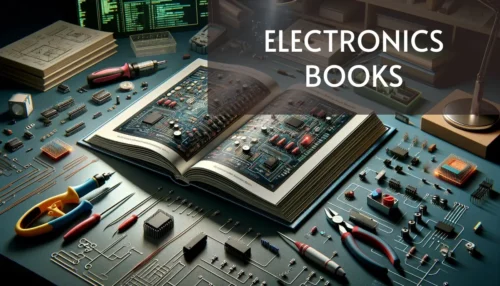
Electronics is the field of physics and engineering specialization, which studies and uses systems whose operation is based on the conduction and control of the flow of electrons or other electrically charged particles.
Edison was the first to observe in 1883 the thermionic emission, when he placed a sheet inside a bulb to avoid the blackening produced in the glass bulb by the carbon filament.
Electronics currently perform a wide variety of tasks. The main uses of electronic circuits are control, processing, distribution of information, conversion and distribution of electrical energy.
11) General Physics Books
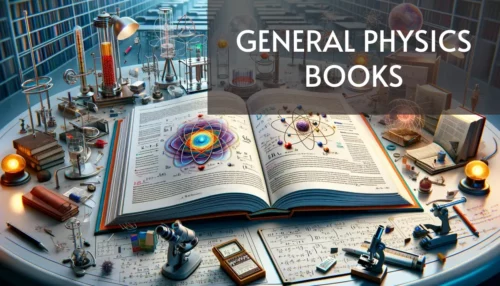
In general terms we could say that physics studies the basic elementary relationships between inanimate bodies and the other natural sciences study the relationships between more complex systems. For example, physics studies the structure of the atom and molecules, while chemistry studies the phenomena that occur between atoms and molecules.
There are other natural sciences that also study phenomena between inanimate bodies. For example, chemistry and astronomy, or more precisely, astrophysics. These sciences have a close connection with physics and it is difficult to say where one ends and the other begins.
If you want to get into the exciting world of physics these book selections will give you an initial and general idea about all the topics that physics deals with.
12) Hydraulics Books

Within the branch of physics, we find hydraulics, which is the science that studies the behavior of fluids based on their specific properties. That is to say, it examines the mechanical properties of liquids depending on the forces they can be subjected to.
The earliest notions of hydraulics date back to the times of the construction of the first Roman aqueducts, with Archimedes being the first to establish the groundwork for a systematic study of the subject.
The history of hydraulics is truly vast. Let’s not forget that the earliest civilizations were established along various rivers, a strategy that allowed them to have a constant supply of water for consumption and, over time, for their agricultural activities and personal hygiene. It took many centuries for humans to learn to use water in more sophisticated ways.
13) Hydrostatics Books
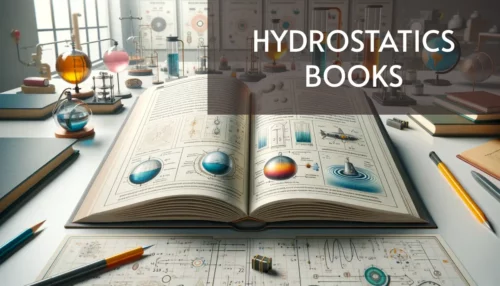
Hydrostatics is the branch of physics dedicated to the analysis of fluid equilibrium. It is the field of this science that focuses on researching phenomena related to fluids found in a container or vessel.
To define what hydrostatics is, it is therefore essential to first refer to fluids. A fluid is a substance whose molecules are held together by weak attractive or cohesive forces. These substances, which can be liquids or gases, take the shape of the container that holds them; in the case of gases, they also lack their own volume.
The principles of Pascal and Archimedes are the foundations of hydrostatics.
14) Kinematic Physics Books
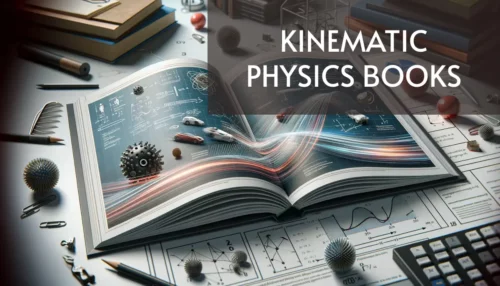
Kinematics is a branch of physics devoted to the study of the motion of bodies in space, without attending to the causes that produce it (what we call forces). Therefore, kinematics only studies the motion itself, unlike dynamics, which studies the interactions that produce it. Vector calculus is the most appropriate mathematical tool for them.
The origins of kinematics go back to ancient astronomy, when astronomers and philosophers such as Galileo Galilei observed the motion of spheres in inclined planes and in free fall to understand the motion of celestial bodies.
These studies, along with those of Nicolaus Copernicus, Tycho Brahe and Johannes Kepler, served as a reference for Isaac Newton to formulate his three Laws of Motion, and together they founded modern kinematics in the early 18th century.
15) Kinetic Energy Books
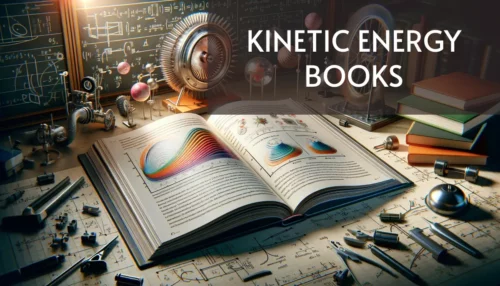
Kinetic energy is a form of energy, known as energy of motion. The kinetic energy of an object is produced due to its movements and depends on its mass and velocity. Kinetic energy is often abbreviated as “KE” or “Ek”.
Kinetic energy is also defined as the amount of work needed to accelerate a body of a certain mass to a certain velocity. This energy remains constant as long as the velocity of the body is maintained.
There are various methods to calculate kinetic energy, depending on the type of mechanics employed, whether classical, quantum, or relativistic. Factors such as size, velocity of the body, and the particles it comprises will also affect the calculation.
16) Nuclear Energy Books
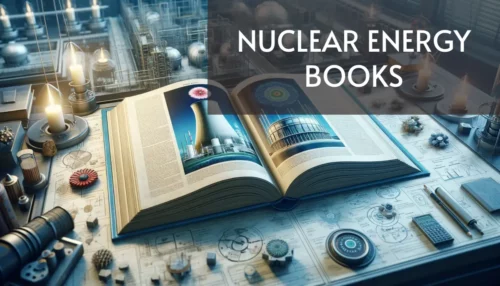
Considering that energy generation is one of the most important processes in the world, we have compiled a comprehensive selection of free nuclear energy books in PDF format for you.
In the texts we present to you, you will be able to learn about different concepts of the topic, including everything related to nuclear fission and nuclear fusion, the heat energy used to generate steam and electricity, among many other things.
By consulting the books we present to you today, you will learn about the sectors where nuclear energy can be used, its benefits, potential, generation process, etc.
17) Optics Books
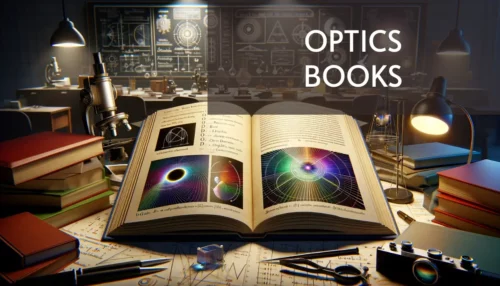
With the aim of allowing you to acquire new knowledge or complement your understanding of an interesting topic, we have created a collection of free optics books in PDF format.
Optics is defined as the science that studies light and is part of physics; there is geometric optics which considers light to travel in straight lines, and physical optics which considers light as an electromagnetic wave.
To enable you to obtain all the information and understanding about this discipline of physics, we invite you to read the texts presented in this section.
18) Pneumatics Books

Pneumatics is the technology that employs a gas (usually compressed air) as a means of transmitting the energy necessary to move and operate mechanisms. Typically, the gas used is compressed air, but for special applications, nitrogen or other inert gases can be used.
Pneumatics is a simple and reliable way to make things move, simply by using clean and dry air. Pneumatic systems use this compressed air to create motion and mechanical power applications to “work” in factory automation systems.
Pneumatics utilizes an air compressor to decrease the volume of air in order to increase air pressure. It then passes through a filter in a pneumatic tube, where it is controlled by valves before reaching an actuator that performs the work at the end of the process.
19) Quantum Physics Books
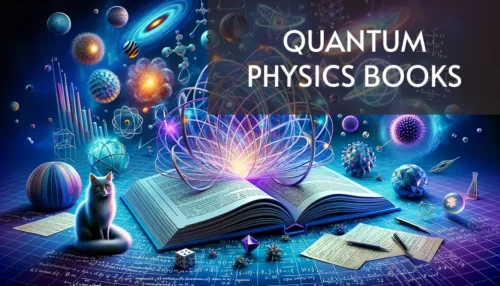
Quantum physics is the branch of science that studies the characteristics, behaviors, and interactions of particles at the atomic and subatomic level. The quantum concept was created in the year 1900, in the proposal of the quantum theory postulated by Planck, where he explained the radiation of the black body.
Although quantum physics describes the world on an atomic scale, we can observe its consequences on a macroscopic scale in thermal, optical, electrical and magnetic properties. Quantum physics has also important technological applications such as the invention of the transistor and therefore the computer and is the base of most of the high technology electronics we use today.
In many aspects the terminologies quantum physics, quantum mechanics and quantum theory are used as synonyms. In a general way they mean the same thing even though they differ in theoretical terms.
20) Solar Energy Books
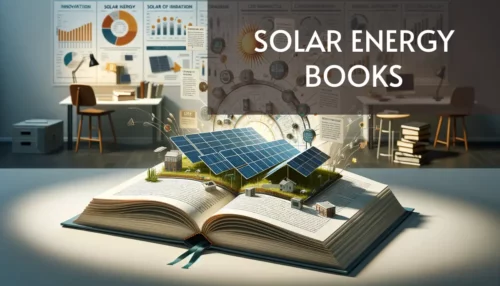
Solar energy is a clean and renewable source of power harnessed from the sun’s radiation. It is converted into electricity through photovoltaic cells or concentrated solar power systems, making it an eco-friendly alternative to conventional energy sources. Solar power is a key player in the transition to a sustainable and greener energy future.
If you’re interested in delving deeper into solar energy and its applications, we invite you to download our free solar energy PDF books. These resources will provide you with valuable insights into solar technology, its benefits, and how to harness its potential for various purposes.
Don’t miss the chance to explore the world of solar energy and contribute to a more environmentally responsible energy landscape.
21) Statics Books

Static is a word of Greek origin, from “statikos”, which means motionless or in equilibrium. We say that something is static when it is immobile, without movement. The opposite of statics is dynamics, which implies motion.
Statics is a branch of physical science that studies how forces act on immobile bodies. The goal of statics is to determine the resultant force and resultant moment of all forces acting on a body to establish its equilibrium conditions.
Although the principles of statics were already enunciated by the ancient Greek philosophers, the systematization of this discipline is largely due to the work of the Italian scholar Galileo Galilei (1564-1642).
22) Thermodynamics Books
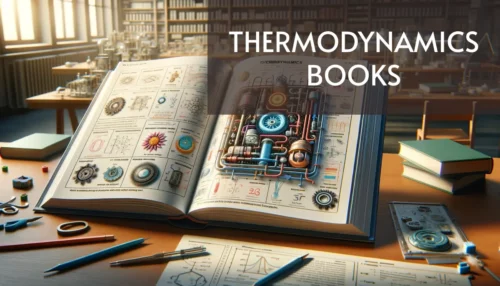
Thermodynamics is the area of physics that studies the relationship between heat, applied force (also known as work) and energy transfer.
Thermodynamic processes are determined by three basic laws: The first law allows us to understand how energy is conserved, the second law is used to know the conditions necessary for the transfer of energy to occur and the third law serves to know the behavior of systems in equilibrium.
The formal study of thermodynamics began thanks to Otto von Guericke in 1650, a German physicist and jurist who designed and built the first vacuum pump, refuting Aristotle and his maxim that “nature abhors a vacuum” with its applications.


